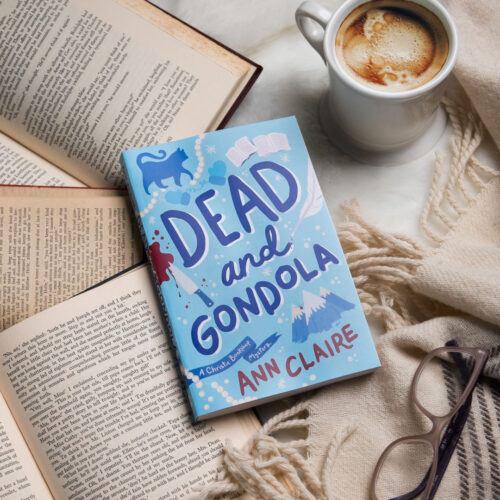 What does the Greek king Ptolemy I, the way you type in your sentence endings, a WWII weather report, and the word “northeast” have in common? They are all clues to solving some of the grandest puzzles of all time, and what con men and magicians often call “tells” or personal habits that give away the game.
What does the Greek king Ptolemy I, the way you type in your sentence endings, a WWII weather report, and the word “northeast” have in common? They are all clues to solving some of the grandest puzzles of all time, and what con men and magicians often call “tells” or personal habits that give away the game.
The 1987 movie House of Games has a wonderful take on tells that is actually central to its plot, so I won’t go into detail just in case you haven’t seen it yet. Even if you have seen it and know how it ends, it is still delightful to rewatch it years later. Another wonderful memory of mine is watching one of Penn and Teller’s magic acts where they repeat the same trick several times, each time providing a fake tell to fool you repeatedly about the trick. (Penn wrote the foreward of my first book about email BTW.) Magicians excel in having you focus on something other than what they are doing, so the tell is part of their act. Con men — such as card sharks and swindlers depicted in the movie — look for their mark’s tells so they can manipulate them into getting money.
I was reminded about tells and clues after reading The Writing of the Gods, a wonderful book that came out last fall by Edward Dolnick about solving the translations that appear on the Rosetta Stone. The book describes how two scholars tried over decades to make progress on the translation. It is a wonderful read, especially if you have interest in ancient Egypt, like solving codes and puzzles, want to hear about mathematicians behaving badly, or just interested in a fascinating description about life back in the day when colonial powers ruled the world and could just appropriate artifacts with never a care. Dolnick brings the puzzles of the stone to life for me, showing us the pure thirst for knowledge and showing the drive that these two men had in trying to figure out what was going on with the three languages written on that piece of rock.
As you might have guessed, the Ptolemy clue that opened this post is what got scholars working on figuring out how the text, which is written in three different languages, were related. Given that he was Greek, there was no easy way to write down his name using a word that was not part of the languages of ancient Egypt. The scribes had to spell it out, phonetically. The hardest part about the stone was the hieroglyphics, because they can play the role of symbols, letters of the alphabet, and grouped together to form ideas or other concepts.
One of my favorite stories about tells has to do with solving the German wartime codes Enigma and Lorenz. I have written about my visit to Colossus here. The tell used to break these codes had to do with knowing the vocabulary used by the military to provide the local weather report, and knowing that this report was usually placed at the top of each message. Given that the Allies recorded thousands of messages, they had a large corpus to use in their decodes.
But unlike these wartime puzzles, figuring out the Rosetta Stone had a major problem: you first had to find the context and get into the heads of the ancients without really any idea of what their lives were like or what they did. It is one thing to be solving a puzzle with contemporary references. It is another thing to try to reconstruct a dead language with no known speakers, and to do so by using yet another dead language.
Dolnick mentioned something in his book that got me looking further into our next tell. He was nice enough to answer my query with a link to this story in the NY Times which recounts the double-space-at-the-end-of-a-sentence debacle. The problem has to do with college essays, and having your parents write them, or more accurately, type them. Because those of us of a certain age learned to type back in the pre-PC era, we have this ingrained habit of using two spaces after a period. Kids who were digital natives didn’t have this habit, and college admissions staff could quickly recognize what parts of the essay were written by the parent as a result. If you didn’t know the context or the history, you probably would have missed this tell.
Finally, there is the “northeast” clue. Astute readers will probably recognize this as part of the decoding effort with the Kryptos sculpture at CIA headquarters. I wrote about this several years ago when I got a chance to meet Elonka Dunnin, who maintains a wonderful resource page here. The clue is from the sculptor, James Sanborn, who is trying to help people decrypt the final piece of the puzzle. And just to bring things to a delicious full circle, one of the passages in the sculpture relates to the diary of archaeologist Howard Carter on the day he discovered King Tut’s tomb in 1922. It is all about Egypt!
 Bruce Schneier’s work has withstood the test of time and is still relevant today.
Bruce Schneier’s work has withstood the test of time and is still relevant today.

 With the reinstatement of previously
With the reinstatement of previously 

![Tomorrow, and Tomorrow, and Tomorrow: A novel by [Gabrielle Zevin]](https://m.media-amazon.com/images/I/51jz2YXICBL.jpg) Normally when I finish a book I have some strong opinions either pro or con. I am of two minds with
Normally when I finish a book I have some strong opinions either pro or con. I am of two minds with  What does the Greek king Ptolemy I, the way you type in your sentence endings, a WWII weather report, and the word “northeast” have in common? They are all clues to solving some of the grandest puzzles of all time, and what con men and magicians often call “tells” or personal habits that give away the game.
What does the Greek king Ptolemy I, the way you type in your sentence endings, a WWII weather report, and the word “northeast” have in common? They are all clues to solving some of the grandest puzzles of all time, and what con men and magicians often call “tells” or personal habits that give away the game. Karin Reed and Joseph Allen have written a great sequel to their book, Suddenly Virtual, titled, naturally enough,
Karin Reed and Joseph Allen have written a great sequel to their book, Suddenly Virtual, titled, naturally enough, 